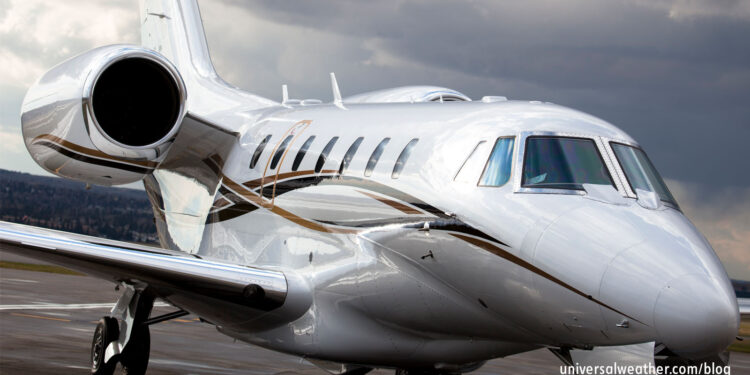Tips on Flying to Japan – Airport Ops

This is a post by author Hiroshi Higashiyama. Hiroshi is representative director for Universal Aviation in Japan, which has aircraft ground handling facilities in Haneda, Narita, Sapporo and Osaka. Hiroshi is an expert on business aircraft operations in Japan and can be contacted at hiroshihigashiyama@universalaviation.aero.
This business aviation blog post is the first part in a series on business aviation operations in Japan.
General Aviation (GA) access to Japan is easier than it was just a few years ago – particularly with opening of 24-hour GA ops at Haneda (RJTT). But, it’s important to be aware of airport slot requirements, curfews, and aircraft parking restrictions. We recommend you work with your 3rd-party provider and ground handler to maximize operational flexibility.
The following is an overview of what you need to know:
1. Consider airport operating hours and curfews
Four airports in Japan are open 24 hours while the rest have curfews. 24-hour airports include RJTT, Kansai (RJBB), Nagoya (RJGG) and Kitakyushu (RJFR). While all are airports of entry (AOE), keep in mind that RJFR does not offer 24 hour Customs, Immigration and Quarantine (CIQ). Hours are restricted at many other airports in Japan. Sapporo (RJCC), for example, only opens 0700-2200 local, even though the tower is staffed 24 hours for emergencies, with CIQ available 0830-1700 local. At Sendai (RJSS) operating hours are 0730-2130 local and aircraft must depart/arrive at least 30 minutes prior to closure. CIQ at RJSS is normally available 0830-1700 local, but customs hours may be extended if good reasons are provided.
2. Overtime is rarely available
In Japan, airports with operating curfews generally do not permit overtime. In cases of a medical emergency, airport and CIQ overtime may be possible. Airport authorities may ask for patient information, and/or doctor’s statement, prior to approving overtime. Ground handlers can arrange for ground ambulance cars to enter the ramp – either to drop off or collect patients – throughout Japan.
3. Noise restrictions exist
Japan, as a whole, only accepts Stage 3 and above aircraft. Stage 2 operations are prohibited. While airport authorities seldom physically check or confirm noise status, there’s always a chance that you’ll be ramp checked. Exceptions to Stage 2 prohibition exists for diplomatic and medical emergency flights only.
4. Most airports are located some distance from town centers
Many airports in Japan are located well outside city or town centers. Hiroshima (RJOA), Nagoya (RJNA) and Osaka Kansai (RJBB) are all about an hour’s drive from the center, while RJAA is typically one to two hours. The closest city airport in Japan is Fukuoka (RJFF) – just 10 minutes from town. All airports have access to taxis, pre-paid transportation, and trains. In the case of RJAA, there are highway, shuttle bus, and train options into central Tokyo. While train options at RJAA appear attractive (just 35 minutes), be aware that connections may be necessary, and you’ll have access to limited English speaking support.
5. Consider airport slot requirements
Airport slots are needed for all airports in Japan, and this can involve longer lead times with strict deviation allowances. Generally, if you miss your airport slot time you’ll be permitted to land, but airport authorities will ask your ground handler to provide an explanation. GA slot times are rigidly monitored at RJTT, due to high volume of domestic and international scheduled commercial airline activity. When operating to smaller domestic-only airports, slots are easier to obtain, but parking options may be limited.
6. Consider extended stays restrictions
RJTT has a parking limitation of 10 continuous days. There are no exceptions to this rule, but you may depart and return if additional days are needed and parking is available. Maximum parking at RJAA is 30 consecutive days. While there are no formal aircraft parking limitations at other airports in Japan, parking availability may be challenging due to limited availability. Both RJTT and RJAA assign designated areas for GA parking. At other airports you’ll often park in the “international area” along with commercial aircraft. Aircraft are not moved, or relocated, in Japan without the crew’s knowledge. Crew need to either be present or, alternatively, the ground handler may supervise the move with crew’s approval.
7. Avoid peak hours of operation
Airports in Japan are typically busiest in the mornings or late afternoon. RJTT, for example, experiences peak operations from 0700-1100 and 1700-2000 local. Commercial aircraft always take priority over GA movements in terms of airport slots and parking.
8. Airport infrastructure is good in Japan
Overall, runways and taxiways are in good condition and all airport construction is advised by NOTAM. Be aware that GA hangar space is limited in Japan and available on a first-come-first-serve basis.
9. Know day-of-operations considerations
In some cases, depending where you park, aircraft will need to be staged for departure. Your ground handler will try to obtain parking so as to allow the aircraft to taxi out on its own. But, in some cases, you’ll need a push back or a tow. Upon arrival in Japan the tower will tell the crew which taxiway to use and which aircraft parking spot number has been assigned.
Conclusion
Airport operations are straight-forward in Japan. Few issues, or complications, are encountered assuming adequate pre-planning and sufficient advance notification.
Questions?
If you have any questions about this article or operating to Japan, contact me at hiroshihigashiyama@universalaviation.aero.
Later we will discuss ground handling for your trip to Japan.




